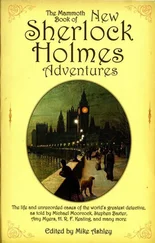DANIEL MILLS
The Photographer’s Tale
DANIEL MILLS LIVES IN Vermont, New England. He is the author of the novel Revenants: A Dream of New England from Chômu Press, and his short fiction has appeared or is forthcoming in a variety of venues, including Historical Lovecraft, Delicate Toxins, Supernatural Tales 20, Aklonomicon, Dadaoism, A Season in Carcosa and The Grimscribe’s Puppets .
“Spirit photography has existed for nearly as long as the photographic medium itself,” explains Mills. “As early as 1869, engraver and amateur photographer William H. Mumler was tried on charges of fraud in relation to his purported images of the dead.
“Likewise the haunted photograph is a well-established horror trope, one that has far outlasted the heyday of spirit photography. In such stories, the haunting is typically presented to the reader as a phenomenon of the development process — i.e. a photograph of an unremarkable scene is developed to reveal the otherwise invisible presence of a ghost. Horror ensues.
“‘The Photographer’s Tale’ attempts a variation on the now-familiar model. Here the camera lens itself — rather than the process of development — serves as the agent of unearthly revelation. In the viewfinder, the protagonist Lowell obtains a glimpse of the Other — of the future, perhaps, the soul in all of its grotesque splendour.
“This other reality defies all attempts at illumination, all of Lowell’s efforts to capture or contain it via film. As he himself describes it: ‘There are places — interiors, I mean — corners so dark they cannot be lighted.’ His flash powder burns but cannot chase away the darkness.
“By the time his tale concludes, he is left alone, with nothing save his guilt, his unconfessed sins, and the endless New England winter.”
* * *
I HEARD THIS STORY from a passing acquaintance, a fellow photographer whom we shall call Lowell. I met Lowell in June of last year at a mountaintop resort in northern Vermont. I had travelled there for my health and was surprised to meet another who shared my profession.
The two of us struck up a conversation one evening after supper as we took cigars on the veranda — two old men alone with the wild hills before us. The darkness covered us completely and Lowell’s haggard features were visible only by the pale orange tip of his cigar.
Photographic technique was the object of our discussion. As I recall, we argued back and forth for some time regarding the utility of the new flash lamp.
“I’m not denying that it might be useful,” Lowell conceded. “But only up to a point. There are places — interiors, I mean — corners so dark they cannot be lighted.”
I shook my head. “I’m afraid I don’t follow you.”
He exhaled heavily, releasing a cloud of smoke. His mood was unreadable. Turning from me, he looked out toward the distant mountains, black beneath the hidden moon. A long minute elapsed, a silence spun from the murmur of crickets, the occasional scrap of bird song.
He sighed. “Perhaps I had better explain.”
The morning of 1 December, 1892 dawned cold and grey, promising an early snowfall. After breakfasting in his apartment, Lowell descended the back stair to his studio, where he was surprised to find that a shipping crate had been left for him with the first post. There was no return address, but he recognised the handwriting on the label and knew it to be from Patrick.
Lowell had first encountered the boy on the streets of Providence some twelve years before. Patrick was no more than eight or nine at the time, one among hundreds of beggar children who had resorted to thievery and worse in order to survive. One night in October, Lowell returned to his studio to find the boy curled up in the doorway: soaked and shivering, delirious with fever. Lowell brought him inside and allowed him to spend the night.
Days went by — Patrick’s health improved — but Lowell did not turn him out. The boy served as his apprentice for the next seven years, assisting in the darkroom in exchange for room and board. Their relationship was a close one, and in time, the unmarried Lowell came to regard the lad as his own son, only for Patrick to leave him — as sons will do — at the age of sixteen.
Whatever its cause, their final parting, when it came, was not amicable. Lowell blamed himself for it. He sought shelter in alcoholism and later in the Church. Five years passed. His letters to Patrick went unanswered but from time to time he received word of his former apprentice from colleagues in New York.
In 1892, Patrick was just twenty-one years old but already esteemed an expert in the field of portrait photography. He was said to possess an eye for hidden beauty and feeling that allowed him to reveal, with considerable skill, “the very soul” of his subject. Lowell admitted to a twinge of jealousy in this. Certainly, his own work had never inspired such hyperbole.
He knelt before the shipping crate and lifted the lid, peeling back layers of straw and brown paper to reveal a view camera. It was a newer model, equipped with a built-in viewfinder and little used by its appearance. A length of ribbon had been fastened around the front standard, the ends tied up in an elaborate bow.
Lowell plucked the camera out of the crate and tested the action of the shutter. Click . Hearing the sound, he exhaled, his anxiety evaporating like shadows at sundown. He hurried to the doorway and took down his hat and coat. His first client was not due for another hour, giving him plenty of time to walk to the post office and send off a telegram of thanks to New York.
Outside, the weather was dismal, but the avenue bustled with the usual crowds of carriages and pedestrians. Clerks and scriveners scurried past Lowell en route to their respective offices while paperboys shouted the day’s headlines from every corner, their voices ringing shrilly above the rattle of wheels on cobble.
A pair of young women proceeded down the pavement in his direction — sisters, evidently, their good humour unaffected by the wind and imminent snow. The two walked arm-in-arm, laughing, even as their guardian gasped and panted behind them, burdened by a picnic basket and a pair of canvas shopping bags.
One of the sisters smiled at Lowell. The other tittered and tightened her grip on her sister’s elbow. Their treatment of their guardian showed them to be callous, even cruel, but Lowell grinned back at them all the same. He could hardly do otherwise: they were simply too young, too beautiful, too alive.
He crossed the street to the next block and passed Saint Andrew’s church, where he had begun attending mass. Every Sunday morning, he knelt before the altar and prayed, rocked by yearning though he dared not take the Host. That morning, walking past, he let his fingers trail along the rough stones and sighed as the great bell struck the half-hour.
At the post office, he composed a brief message to be wired to Patrick’s studio in New York. Rec’d camera , the wire read. Deepest thanks. Please write .
He asked the clerk to contact him in the event of any delays and then hurried home to keep his first appointment, smiling first at the sisters, whom he passed once more, and then at the paperboy, unable to contain his elation, even in that late season, even as the first flakes of snow drifted down and settled in his hair.
Mrs Lavinia Perkins was Lowell’s most reliable client, a middle-aged teetotaller of extraordinary vanity and peculiar habit — to wit, her insistence on having a new photograph of herself taken on the first of every month. She used these to chart the course and extent of her ageing, scouring each monochrome image for signs of greying hair. This was, of course, an impossible task, but perhaps this was why she preferred the photographer’s lens to that more ordinary (and less expensive) instrument: the mirror.
Читать дальше










